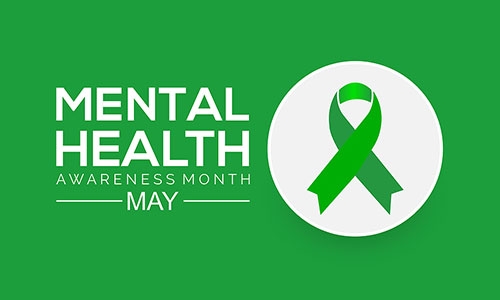You are here
Home ›Mental Health hits home: Part Three of a five-part series offering local perspectives as May is observed as Mental Health Awareness Month

by Dwight Jones
May is Mental Health Awareness Month. Discussing mental health and/or acknowledging you or someone you know may have a problem can be a difficult subject to talk about and even harder to understand. In order to try to better recognize mental health issues, The Standard is printing this five-part series throughout the month to look at the many ways mental illness affects the local community.
Part One of the five-part series told the story of a 19-year-old local college student who suffers from severe anxiety and depression that has used medication and therapy to get well. Part Two told the story of a lifelong Waukon resident who battled mental illness much of his life and unfortunately succumbed to it by taking his own life.
This week will include the story of “Mark” (not his real name), who is now 43 years old but has never experienced a day without mental illness living, sometimes in the forefront and sometimes in the background, of his family. We hear all the stories about adult friends, peers and family members who fight this disease, but often forgotten are the children who live in these homes and can be impacted just as much as their loved ones who are diagnosed with mental illness.
Mark was born and raised in the Harpers Ferry area. He has one sister, two years older, and a mother who has battled mental illness his entire life.
Mark’s mother was diagnosed as being bipolar and having schizophrenia in 1982, the same year his sister was born. His mother was 22 years old at that time.
Mark explained that the mental illness in his family is genetic, and ironically, relatives that have experienced it also had their onset at 22 years old. He also believes that within his family it skips every other generation.
Mark remembers a childhood very different than the ones his friends experienced. His mother was hospitalized numerous times, and he very well remembers going to school, coming home, waiting for his dad to get home from work, loading up in the car and driving to Independence (where his mother was institutionalized), visiting, driving home, getting home late, getting up early for school and repeating the entire process the next day. And the next. And the next.
When the mental health facility in Independence closed, his mother was moved to Mt. Pleasant, but the process described above remained similar.
Mark describes his mother’s mental illness as being a story of extreme highs and lows. The process (from high to low) could take place over a span of six hours or six days, but it was ever changing and highly unpredictable. He describes his mother’s episodes as including a lot of rage, which would undoubtedly be terrible and scary for a young child.
Mark explained that his childhood was different than others in that they couldn’t really have friends over because of the time bomb that was his mother’s disease. He remembers a life that’s had birthday and anniversary parties planned and then canceled last minute. When there was a blow-up, he very well recalls running to a family member’s house for safety, staying at cousins’ houses when things were bad at home, etc.
He remembers social workers and therapists being involved throughout. He knows his mother has been on and off medications his entire life. He states that she doesn’t seem to really comprehend or acknowledge that she even has a mental illness, so her cooperation in trying to get well has always been a struggle.
His mother is now 65 years old and since her early 20’s has never been gainfully employed. Mark explains that her mental illness has prevented it, because she would go from a manic state where she’d be up for two or three days straight, to depressed where she’d spend five to six days unable to get out of bed. His parents eventually divorced, but he doesn’t feel it was due to her condition.
The purpose of this story is to explain that when there is mental illness in a home, everyone struggles, including and arguably most importantly, the children. As an adult, Mark continues to deal with his mother’s mental struggles. It is the only life he’s known.
If you or someone you know has mental health concerns, there is a wide variety of resources where help and information can be found. Make an appointment with your family doctor or see a therapist. Also, the National Institute of Mental Health has a website with a tremendous amount of helpful information that can be found at nimh.nih.gov. In severe cases, dial 988 from any phone to reach the Suicide and Crisis Lifeline offered to everyone 24 hours of every day through the Substance Abuse and Mental Health Services Administration.

